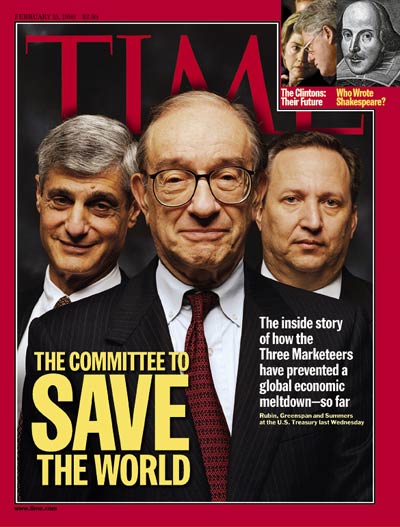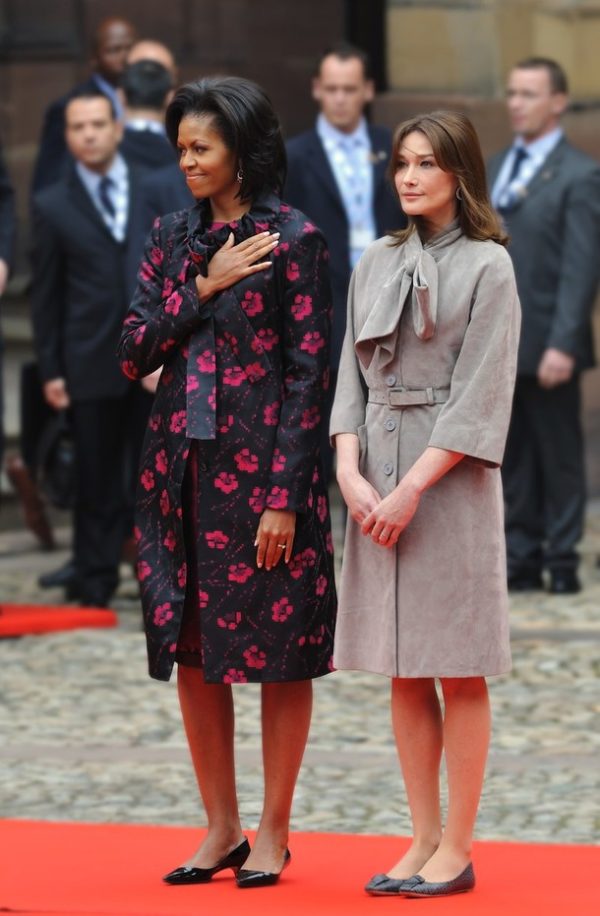Notes
The Committee To Save The World. (Whoops!)

What holds them together is a passion for thinking and an inextinguishable curiosity about a new economic order that is unfolding before them like an Alice in Wonderland world. The sheer fascination of inventing a 21st century financial system motivates them more than the usual Washington drugs of power and money. In the past six years the three men have merged into a kind of brotherhood.
…
Among the top priorities: cleaner international banking systems, transparent lending practices and more open markets. As soon as they can ram those changes through, they expect growth to pick up again–possibly just in time to help a flagging U.S. economy. from: The Three Marketeers (TIME Monday, Feb. 15, 1999).
Because Paul Krugman’s latest opinion piece (“America, The Tarnished” ) references this ten-year-old TIME cover…
… I thought it was worth taking a look at. In the 1999 TIME article, Rubin, Greenspan and Summers — labeled “market heros” or “The Three Marketeers” — are feted as Clinton Administration marvels with the kind of intelligence that can fend off any near-financial catastrophe (a condition curiously telegraphed, in matter-of-fact terms, as a now-expectable attribute of the modern market). In particular, I love the part about Summers favorite analogy:
“Global capital markets pose the same kinds of problems that jet planes do. They are faster, more comfortable, and they get you where you are going better. But the crashes are much more spectacular.”
Short of much detail or critical analysis, the article, much like the headline, presents the three as messianic in stature. Visually, the economic Musketeers represent the classic white collar men, beaming out of confidence (or, drunk on exuberance) that they in their genius, despite the growing vagaries of the market, understand how things work — or, in Summers case, that one can dispense with the social graces if you’re just that smart.
(image: Michael O’Neill)


Reactions
Comments Powered by Disqus